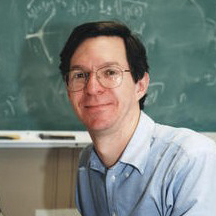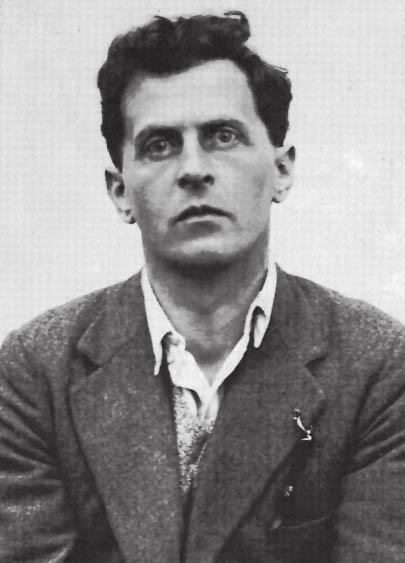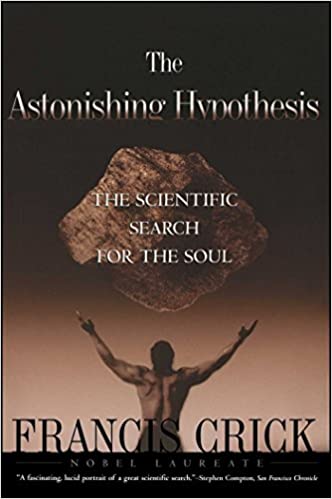How Much of Neuroscience Is an Unwitting Hoax?
Philosopher Ludwig Wittgenstein saw that much materialist neuroscience was neither true, nor false, just nonsenseIn 1996, NYU physics professor Alan Sokal published an article in a journal of postmodern cultural studies. The article, “Transgressing the Boundaries: Towards a Transformative Hermeneutics of Quantum Gravity,” was a hoax. Sokal simply assembled more or less meaningless phrases about cultural theory and quantum physics in a grammatically correct but meaningless manuscript. He revealed the hoax a few weeks later in a magazine.

The hoax ignited a storm of controversy and, in the view of many, revealed the essential sham at the core of postmodern philosophy.
What Sokal (pictured) was doing, whether he knew it or not, was invoking philosopher Ludwig Wittgenstein’s salient critique of philosophy and science, which is that much of our discourse is language games. By language games, Wittgenstein (1889–1951) means the nonsensical cultural and metaphorical content of our language, which leads to imprecision and obfuscation in our expressions.
Language, as used, often hides, rather than reveals, meaning. Pervasive linguistic nonsense afflicts not only cultural studies and philosophical discourse but scientific discourse as well. It’s worth noting that Wittgenstein’s critique of language is not mere esoteric navel-gazing fit only for dusty shelves in linguistics department libraries. We humans are linguistic creatures, and we rely on language to understand ourselves and nature. When language deceives, we are deceived, and the deception is pervasive, insidious, and very difficult to eradicate. The very tools we use to ascertain truth are corrupt.
Wittgenstein was obsessed with conceptual clarity, which he called “sense.” At the root of our linguistic expressions — which include, for example, our scientific theories — are kernels of sense, of valid meaning. Surrounding these kernels of sense are intricate cumbersome overlays of nonsense. The nonsense is derived from our logical imprecision, our conceptual biases, our cultural circumstances, and the history of the language itself. The meaningful concepts that our language conveys are embedded in a thick crust of nonsense. It is fiendishly difficult to dig out sense, largely because the very tools we use to seek truth — our words — are corroded with falsehoods.

Wittgenstein (pictured) believed that philosophy never discovers anything. Discovery is what science and logic do. The purpose of philosophy is to clarify concepts — to carve sense from nonsense — that is, to clarify language. What Sokal did was to act out a Wittgenstein-ian parable: he showed that postmodern philosophy was quite compatible with language stripped of sense. He was right. Much of postmodernism is nonsense.
Wittgenstein was a philosopher of mind — in my view, the most profound since Aquinas. He was harshly critical of the suffocating layers of nonsense that choke modern neuroscience. One example is the mereological fallacy, which is the fallacy of attributing to parts of a thing what can only be attributed to the whole.
For example, it is metaphorical but not really true that my eyes see or my mouth speaks or my legs run. To assert that body parts see or speak or run makes no sense. I see, I speak, I run, using my eyes, mouth, and legs. Wittgenstein believed that the mereological fallacy is at the root of many deep misconceptions in modern neuroscience: he noted that “Only of a living human being… can one say ‘it has sensations; it sees, is blind; hears, is deaf; is conscious or unconscious.’ (Philosophical Investigations, p. 281).”
Consider neuroscientist Francis Crick’s famous assertion in his book The Astonishing Hypothesis: The Scientific Search for Soul (1994):
The Astonishing Hypothesis is that “You,” your joys and your sorrows, your memories and your ambitions, your sense of identity and free will, are in fact no more than the behaviour of a vast assembly of nerve cells and their associated molecules. As Lewis Carroll’s Alice might have phrased it: “You’re nothing but a pack of neurons.”
It is indeed astonishing. The only thing true of Crick’s claim is its grammar. It is otherwise perfect nonsense — we might call it Crick’s Hoax, like Sokal’s Hoax, except Crick was both the perpetrator and the victim of the hoax.
Joys, sorrows, memories, ambition, identity, and free will are abilities of a person, not of any part thereof. Furthermore, it simply makes no sense to say that the behavior of nerve cells and associated molecules is joy, sorrow, memory and the like. Nerve cells and molecules behave in cellular and molecular ways — they make action potentials and neurotransmitters and chemical bonds. People have joys and sorrows and memories. The Venn diagrams of action potentials and neurotransmitters and joys, sorrows, memories etc.) have no overlap, logically.
Please understand that, as Wittgenstein pointed out with respect to reductive materialist assertions in neuroscience, it is not even the case that statements like Crick’s are false. That is, it is neither true that your joys are the behavior of neurons nor is it false that your joys are the behavior of neurons. Neither assertion is sufficiently coherent to verify. Neither assertion makes sense. They’re just gibberish, akin to asserting that mercy is, or is not, a porcupine. Crick’s assertion that your neurons are your joy has no meaning. It’s senseless.

Reductionist materialist theories in neuroscience are not sufficiently coherent even to be wrong. They’re nonsense. The same conceptual content could be generated by writing words on scrabble cubes, throwing the cup on the floor, and then arranging the cubes grammatically. That’s basically what Sokal did — he chose his terms pretty much at random. It’s what Crick did as well but he didn’t have the insight Sokal had. Crick didn’t know his theory was gibberish.
Monash University computer scientist Andrew Bulhak has even designed a computer program that generates postmodern writing from random text and recursive grammar. He suggests a “reverse Turing test”: human writing can be declared unintelligent if it cannot be distinguished from random phrases generated by a computer program. Neuroscientists could do the same — just randomly link brain assertions to psychological assertions: “Behavior of hippocampal subicular neurons generates memory in rats.” Much of it, one suspects, would get published.
Why do highly accomplished thinkers like Crick write and believe nonsense? Sokal, referring to the gullibility of the editors who accepted his hoax paper, said that his intention was to test whether “a leading North American journal of cultural studies… [would] publish an article liberally salted with nonsense if (a) it sounded good and (b) it flattered the editors’ ideological preconceptions.”
To materialists, nonsensical assertions about joys and sorrows being nothing but brains and molecules sound good — that is, sound scientific — and they flatter their own ideological preconceptions. In other words, materialists are immersed in language games, which are their own materialist mythology. They are unable to distinguish sense from nonsense.
I think that is what Roger Scruton (1944–2020) meant when he quipped that contemporary neuroscience is “a vast collection of answers, with no memory of the questions.” Answers and questions in neuroscience based on materialist predicates are simply nonsense. They obscure, rather than reveal, the truth about human nature.
Wittgenstein pointed out that the precondition of truth is sense. If you make no sense, you cannot tell the truth. Scientific theories must first and foremost make sense, before a scrap of experiment is done.
So what does make sense, in the neuroscience of joy and sorrow and memory? This is the meaningful question to ask: “What neurobiological states are necessary for a person to have joy, sorrow or memory?” This is a sensible, conceptually coherent question and all of the superb skills and insights of neuroscientists can be applied to answering it. The logical and metaphysical questions of how it is that there are brains and joys to begin with and why brains are necessary but not sufficient for joys, etc., are for philosophers and theologians to settle. The do not depend on the results of neuroscience. Rather, neuroscience depends on coherent concepts. Logic is prior to science.
You may also wish to look at this article by Michael Egnor: Contradictory, illogical beliefs are a feature, not a bug, of Critical Theory. As a historian of totalitarianism has pointed out, “The aim of totalitarian education has never been to instill convictions but to destroy the capacity to form any.” Critical theory “education” extinguishes the capacity for rational thought and leaves students without the mental tools to evaluate sense vs. nonsense.
Note: The portrait of Ludwig Wittgenstein, on being awarded a scholarship from Trinity College in 1929, is by Clara Sjögren from Ludwig Wittgenstein: The Duty of Genius by Ray Monk (ISBN 978-1-448-11267-8)
